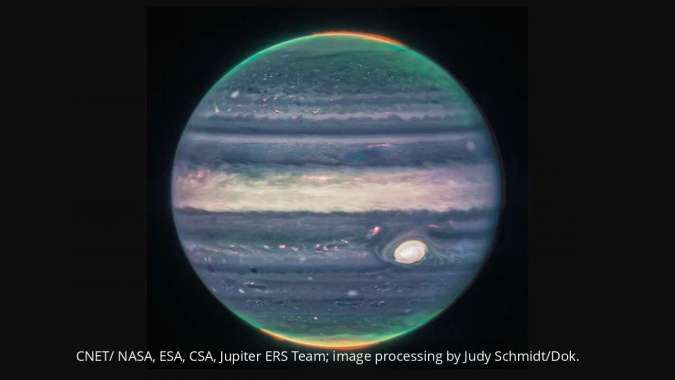KONTAN.CO.ID – There are auroras on Jupiter, this is the last portrait of the largest planet in the solar system. This latest portrait of Jupiter was captured by NASA’s James Webb Space Telescope.
City of CNET (8/23), NASA recently released the latest portrait of Jupiter which looks amazing. The largest planet in the solar system, also dubbed a gas giant, shines in the upper and lower periphery.
“To be honest, we didn’t really expect it to be this good,” planetary astronomer Imke de Pater, who helped lead the Jupiter observations, said in a NASA statement.
“It’s amazing that we can see details of Jupiter with its rings, small satellites and even galaxies in a single image,” he added.
The James Webb Space Telescope is a joint NASA, European Space Agency (ESA) and Canadian Space Agency project that is equipped with a near-infrared camera (NIRCam) that was used July 27 to capture the image.
Read also : Why do the stars seem to twinkle in the night sky? This is the explanation
The camera’s infrared light was decoded to highlight Jupiter’s storms, auroras, rings and moons.
Jupiter’s famous Great Oval-shaped Red Dot Storm appears brighter and whiter in this latest portrait. Looks like a glowing cosmic egg embedded in the atmosphere of a rotating planet.
NASA revealed that the image’s white color is caused by the way storms and clouds reflect sunlight.
Read also : Stars are celestial bodies that emit their own light, here are the characteristics
In another image, Jupiter is also seen with several satellites in orbit. Like Almalthea and Adrastea, they are two of Jupiter’s satellites of dozens known to orbit the giant planet.
Even though Jupiter is considered a ringless planet, you can see that the rings are barely visible in this latest portrait.
Yes, Jupiter’s rings are no more striking than Saturn, which is known as a ringed planet.
While the hazy spots that form Jupiter’s background are probably galaxies. It can prove that the JWST telescope really has extraordinary sharpness to capture images in space.
These new images of Jupiter are a leap forward that the James Webb Space Telescope captured. It also indicates that advances in technology can help better reveal what’s in the solar system.
Check out other news and articles on Google News

“Travel nerd. Social media evangelist. Zombie junkie. Total creator. Avid webaholic. Friend of animals everywhere. Future teen idol.”


:strip_icc():format(jpeg)/kly-media-production/medias/3387188/original/007486800_1614303448-banner__1_.jpg)



